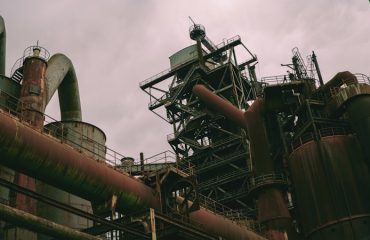Steel. A material synonymous with strength, durability, and reliability. But its applications extend far beyond the obvious. This post delves into compelling case studies demonstrating the versatility and innovative use of steel solutions across various industries, showcasing how it addresses real-world challenges and drives progress.
1. Skyscrapers: Reaching New Heights with Steel’s Structural Integrity
The Burj Khalifa, the world’s tallest building, stands as a testament to steel’s incredible strength and capacity. Its intricate steel frame, a marvel of engineering, allows it to withstand extreme wind loads and seismic activity. The design incorporates high-strength steel alloys, meticulously engineered to optimize weight and structural performance. This case study highlights the crucial role of advanced steel design and fabrication in achieving unprecedented heights in architectural ambition. The careful selection of steel grades, coupled with sophisticated computer modeling, ensured the building’s stability and safety. Furthermore, the use of steel allowed for faster construction times compared to alternative materials, significantly reducing project timelines and costs.
2. Bridges: Spanning Challenges with Steel’s Resilience and Longevity
The Golden Gate Bridge, an iconic symbol of San Francisco, exemplifies the enduring strength and resilience of steel in bridge construction. Its suspension design, utilizing high-tensile steel cables and a robust steel deck, has withstood decades of harsh weather conditions and heavy traffic. This case study demonstrates the importance of material selection and corrosion protection in ensuring the longevity of steel structures. Regular maintenance and innovative coating technologies play a critical role in preserving the bridge’s integrity. The use of steel also allowed for the construction of a long-span bridge, minimizing the number of support piers and reducing environmental impact. Modern bridge designs continue to leverage steel’s superior tensile strength and fatigue resistance, enabling the creation of increasingly impressive and efficient structures.
3. Infrastructure: Building a Sustainable Future with Steel’s Recyclability
Steel’s role in sustainable infrastructure development is increasingly significant. The construction of high-speed rail lines, for instance, relies heavily on steel for tracks, bridges, and stations. This case study emphasizes steel’s recyclability, a key factor in reducing the environmental footprint of construction projects. Unlike many other materials, steel can be recycled infinitely without losing its strength, making it a responsible choice for long-term infrastructure needs. Furthermore, steel’s durability minimizes the need for frequent replacements, further contributing to sustainability. The use of recycled steel content in new construction projects also reduces the demand for virgin materials, lowering energy consumption and greenhouse gas emissions.
4. Automotive Industry: Lightweighting and Enhanced Safety with Advanced Steel Grades
The automotive industry has embraced advanced high-strength steel (AHSS) grades to create lighter, safer vehicles. Modern car bodies incorporate a combination of steel grades tailored to specific structural requirements. AHSS allows for improved crash safety performance, while simultaneously reducing vehicle weight, leading to enhanced fuel efficiency and reduced emissions. This case study explores the innovative use of tailored blanks, which combine different steel grades within a single component, optimizing strength and weight distribution. The advanced manufacturing processes used to form AHSS components also contribute to the overall efficiency and cost-effectiveness of automotive production. The ongoing research and development in advanced steel alloys promises further advancements in vehicle safety and performance.
5. Offshore Structures: Withstanding Extreme Conditions with Steel’s Robustness
Offshore oil and gas platforms face extreme environmental challenges, requiring exceptional structural integrity. Steel’s robustness and resistance to corrosion make it the material of choice for these demanding applications. This case study highlights the specialized coatings and fabrication techniques used to protect steel structures from saltwater corrosion and harsh weather conditions. The design of offshore platforms necessitates meticulous consideration of factors such as wave loading, wind forces, and seismic activity. Steel’s high yield strength and ductile properties allow it to withstand these extreme loads, ensuring the safety and operational reliability of these critical installations. The ongoing development of advanced steel alloys and protective coatings continues to enhance the performance and lifespan of offshore structures.
In conclusion, these case studies demonstrate the diverse and impactful applications of steel solutions across various sectors. Steel’s inherent strength, durability, recyclability, and versatility make it an indispensable material for building a stronger, safer, and more sustainable future. The ongoing advancements in steel technology promise even more innovative and efficient applications in the years to come.
SEO Tags:
Steel case studies, steel applications, steel construction, structural steel, advanced high-strength steel




